Meet the travel agent who explored Colombia from the sea to the mountains on two wheels
Story and photos by Shari Tucker
When people ask you what your first trip was once travel restrictions eased during the COVID-19 pandemic, they probably won’t expect you to say Colombia. For me though, that’s the answer! My first trip outside of Canada in two years was a mountain biking trip to a country smeared by a bad reputation from its drug-related history, yet emerging as a gem for nature, active and sustainable tourism.
In October 2021, I was accepted for a FAM trip in Colombia’s coffee region. It was primarily a mountain biking trip and I had to make a quick decision to go or not. I didn’t have much time to research the area or the difficulty of the trip. I cycle in the summer months in Nova Scotia and I love a little extra adventure. So, sure, why not try mountain biking in the actual mountains of Colombia? I took a giant leap of faith and jumped in with both feet.
Just like many of you, I was crawling out of my skin with the need to travel, to explore and to escape the dark COVID cloud hanging over our heads. To be honest, I had never heard of the city of Manizales where the tour would start, or Pereira where I’d fly in to. The information provided on the difficulty of the cycling was vague, but the birdwatching, thermal spas and local Hacienda stay sounded great!
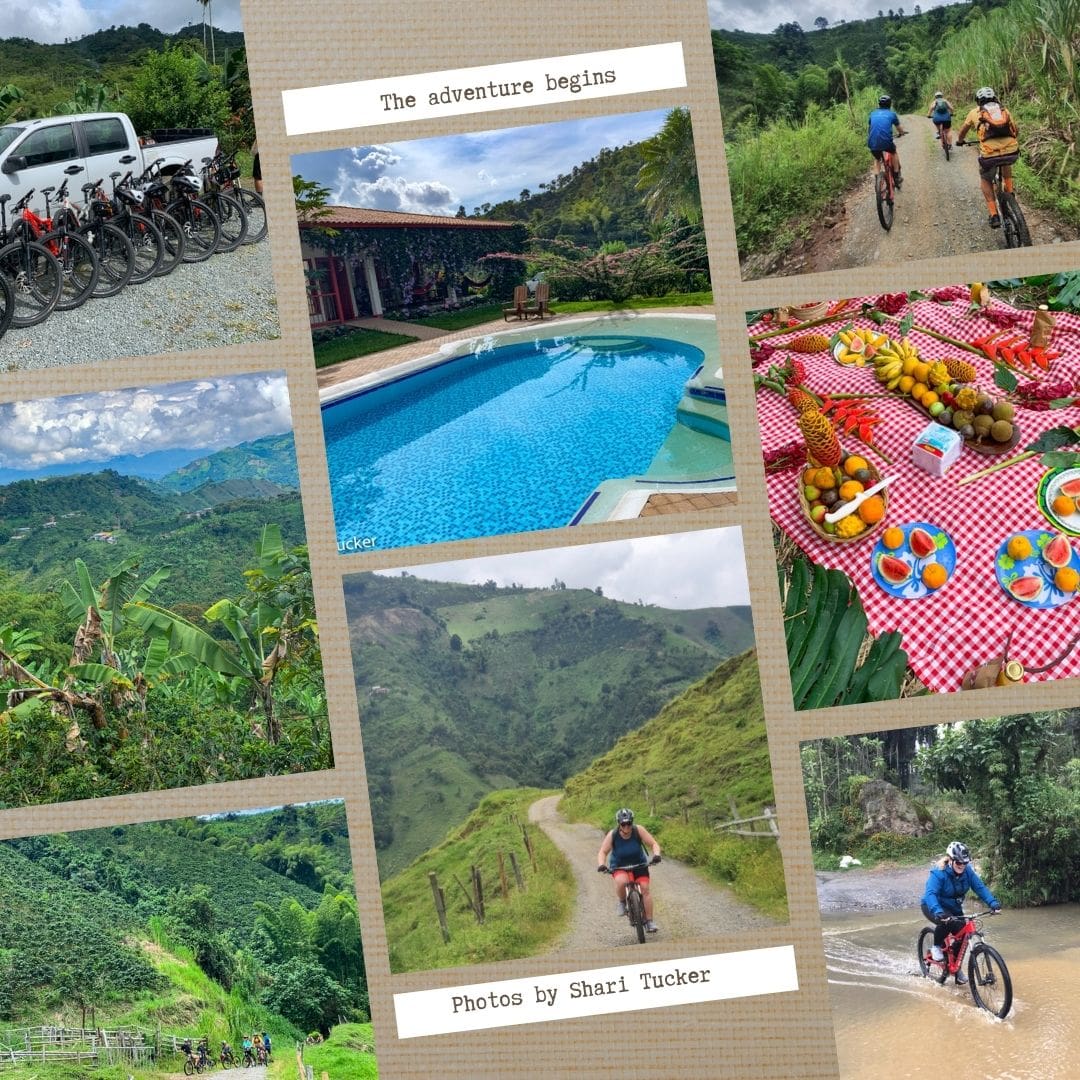
I had already said yes, so despite my days of panic over cycling at over 3500 meters altitude, and then a not-so-new realization of my lack of fitness and more than a little extra weight… well, I almost cancelled. But I didn’t. I learned there would be vehicle support throughout the trip and if at any time I couldn’t do the mountain biking I could ride along without any effort. Phew!
To my surprise and delight, everything went smoothly enroute to Colombia. I flew from Halifax to Toronto to Bogota and then had a five-hour layover to connect to a domestic flight to Pereira. I arrived exhausted, breathless, and excited for a new adventure.
I felt bug-eyed and curious as I stared out the window on our drive from Pereira to Hacienda Venecia where we would stay for the first three nights. From locals going about their daily lives in the streets, to construction workers, motorcyclists, and vendors, just about everyone was wearing a mask in the city as required, indoors and out. As we moved toward the outskirts of the city, the busy city streets turned to twisty mountain roads. Around every tight corner was an incredible, lush green view of beautiful mountains.
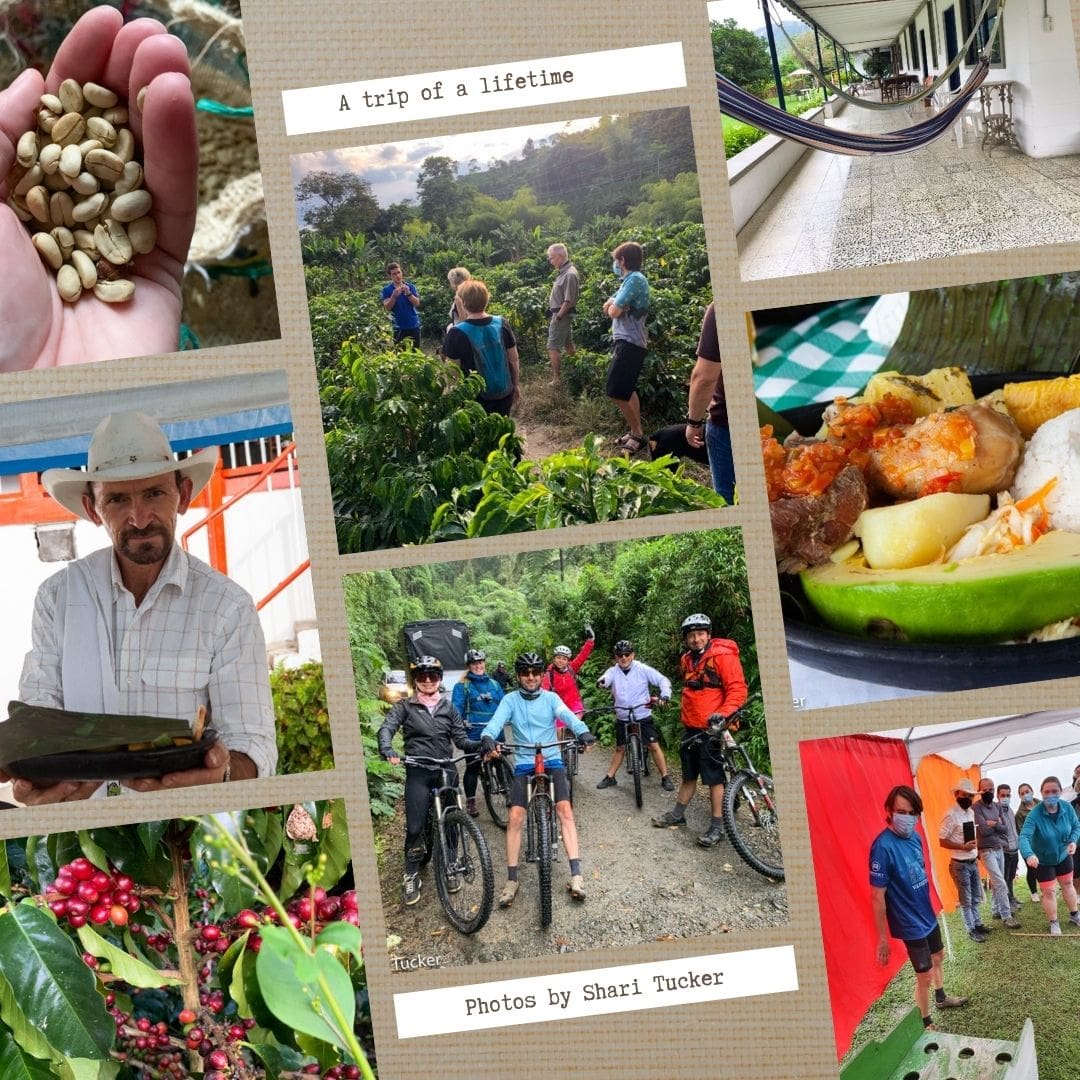
People often assume the infrastructure in Colombia is poor, but near the city of Manizales and throughout the Coffee Axis the roads are excellent. Off the beaten path, on the secondary dirt roads it’s rough but the main highways are well kept, smooth and traffic was much more reasonable than I expected.
The mountain roads were shared by transport trucks, local buses, cars, and bicycles. Midday on a weekday we were already seeing locals climbing mountains on their road bikes, mixed in with normal traffic. I was amazed by the amount of people who were choosing to bike up the steep mountain inclines of 20 kilometres or more just for fun.
After about an hour of watching the changing landscapes, we turned down a narrow dirt road leading to our Hacienda.
We were greeted by the most welcoming people and settled in before having a home cooked, local lunch. That afternoon we had an interactive cacao workshop and then a delicious local dinner with our hosts from Hacienda Venecia and Trailhunters who explained the details of what to expect for the coming days.
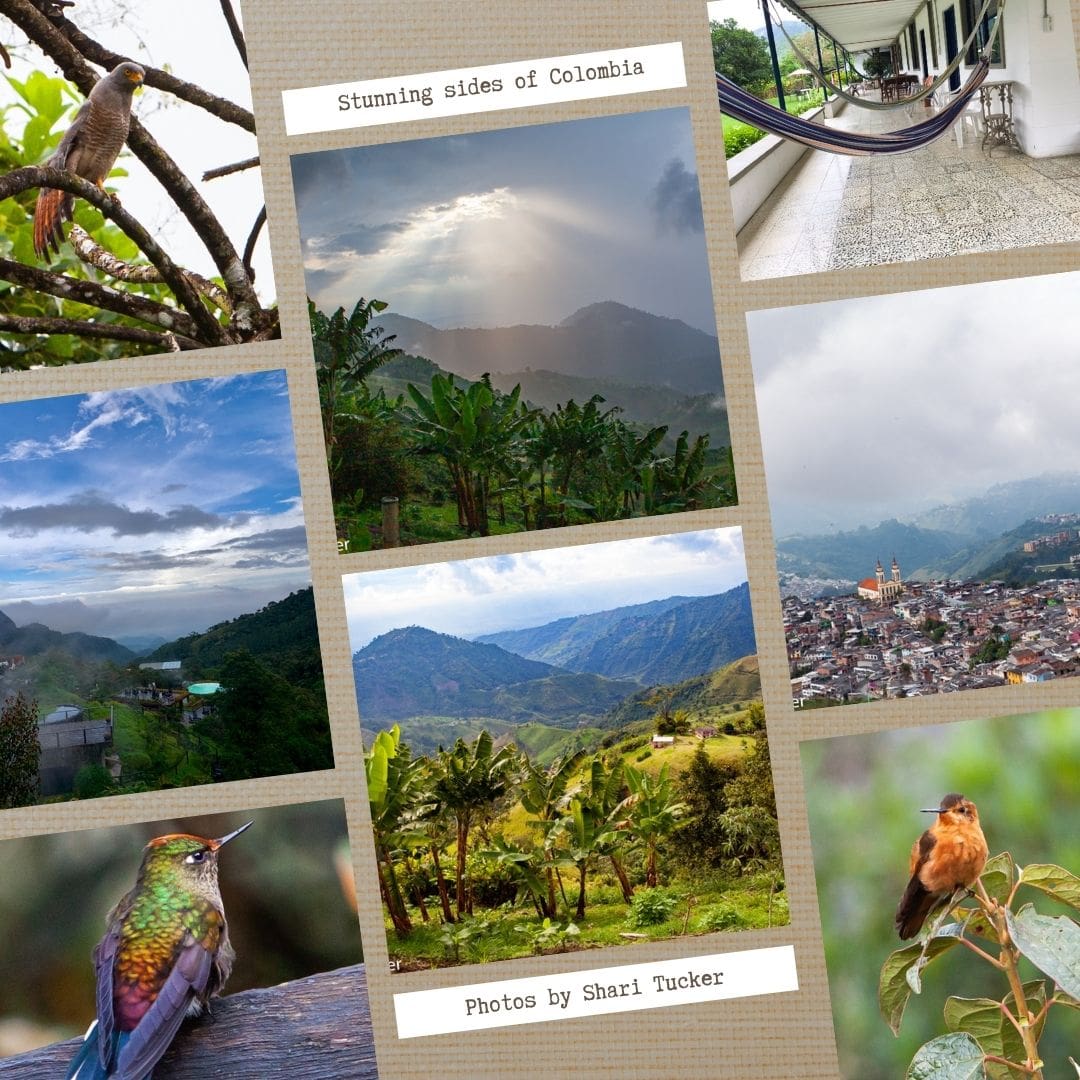
After a much-needed night’s sleep, we gathered for breakfast, got fitted for our bikes and helmets, learned about the brakes and gears. We tentatively peddled down the dirt driveway and out to the main dirt road where our adventure would really begin.
Over the next five days, we spent three to four hours a day cycling and seeing the countryside. The remainder of the day was filled with culture, sightseeing and incredible meals. It was a great combination of being challenged physically, enjoying all that nature had to offer and feeling connected to Colombian culture.
We cycled eight and 16 kilometres a day over varied terrain suitable for beginners but challenging enough for those with experience. We tackled slow, steep uphill climbs and fast, downhill descents. We travelled mainly on secondary dirt roads with little traffic, lots of puddles and a few obstacles along the way. Our first day we did a four-kilometre uphill climb, followed by the same steep downhill descent. Our last day we cycled nearly 16 kilometres downhill descending over 1200 meters of elevation in just under an hour, including rest stops. It was exciting, difficult, and exhilarating. At the end I was equal parts proud of what I had accomplished and sad that it was all over.
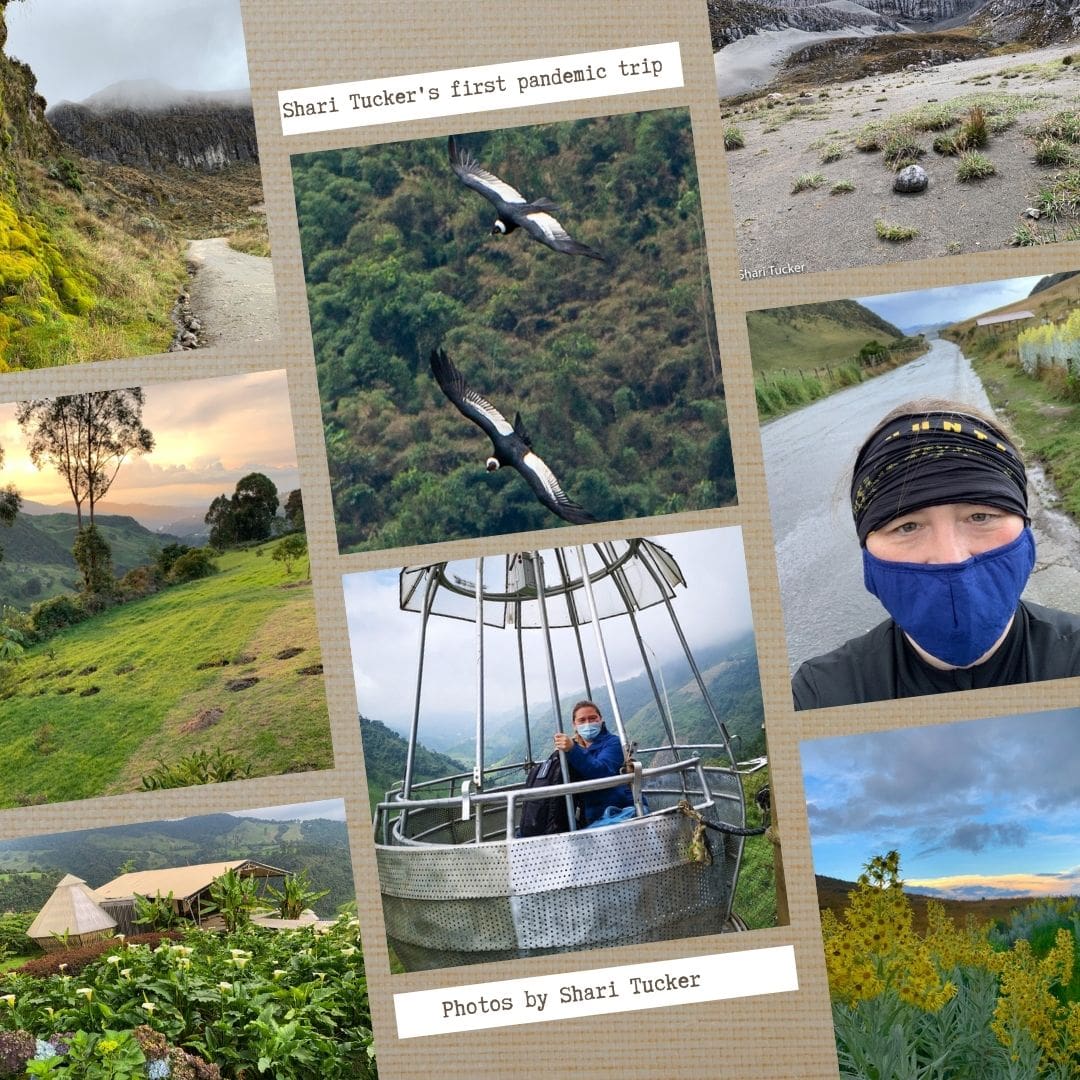
A common misconception about cycling tours is that all you do is cycle. That’s not the case at all. In fact, the experiences we had in the countryside were so small and authentic that you simply couldn’t replicate them in a busier centre and gave you a great feeling of connection with the locals. In between our cycling adventures we enjoyed:
- A coffee plantation tour and rum tasting at Hacienda Venecia
- A visit to Don Gabriel Coffee Plantation where we met the owners and learned about their small production of “shade coffee”
- A traditional meal called Fiambre Montañero
- Playing Rana during a mountain thunderstorm with the owner at Finca La Giralda
- 360-degree views from the top of the 104-meter spire at Cathedral Basilica of Manizales
- Relaxing in the thermal springs at Termales del Ruiz
- Birdwatching in the valley and the mountains with hundreds of species of hummingbirds in two very different eco-systems
- Exploring Los Nevados Natural Park (Volcano park), learning about four eco-systems and reaching altitude of 4400 meters at Valle de las Tumbes
After a physically challenging and mentally freeing six days cycling, our trip ended with one last dinner in Manizales. Nature had already proved to be a healing force for this travelling-heart that had been pent-up too long. I felt alive again.
For the next week, I continued through the coffee region exploring both off-the-beaten track and highly touristed sights to see the contrast. I worked with Where Next Travel to arrange unique and sustainable hotel stays, private transportation and incredible local guides. I enjoyed a combination of adventure and luxury at El Nido del Condor where you go in hopes of seeing the endangered Andean Condor and it didn’t disappoint!
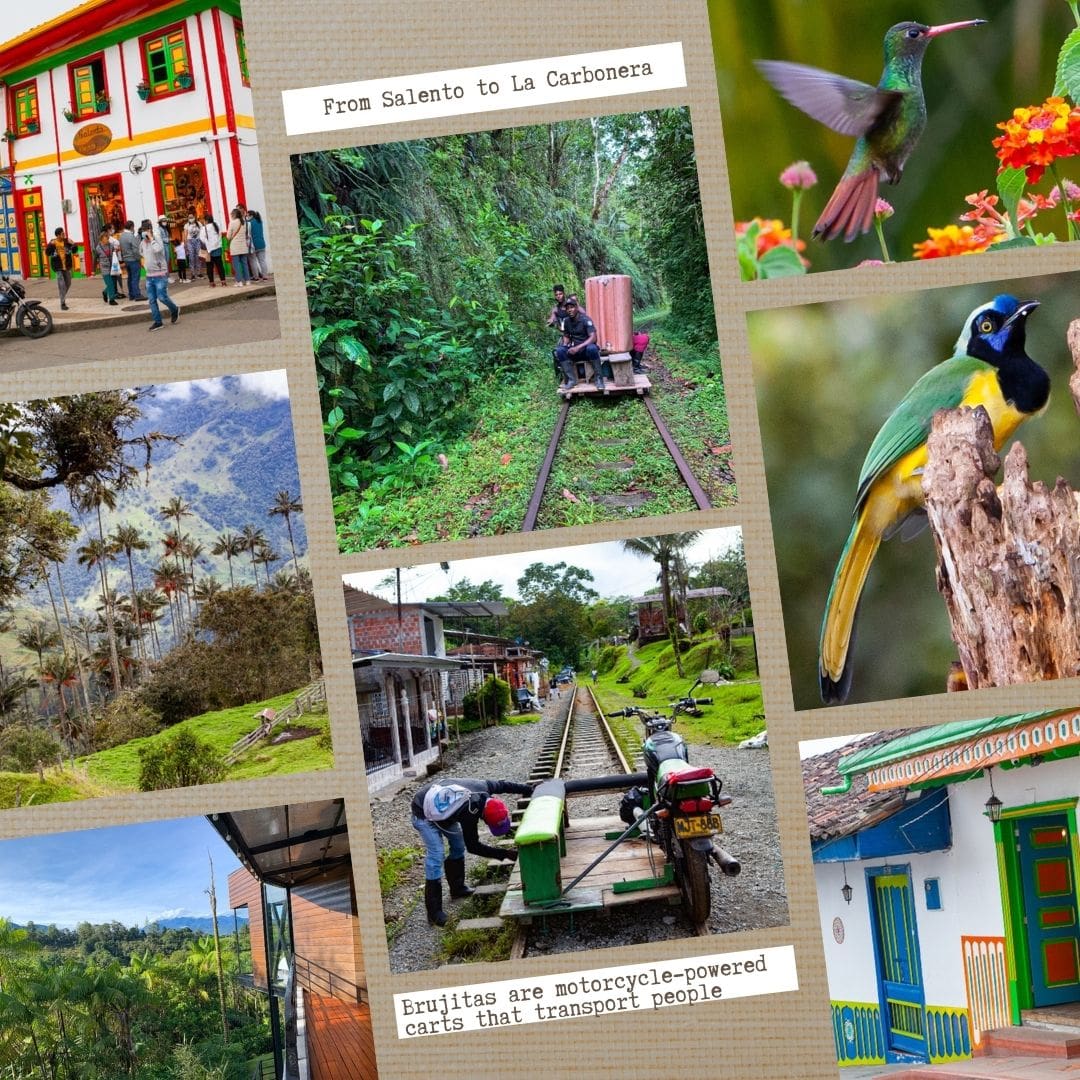
Salento and Cocora Valley on the other hand, were busy with international and domestic tourists even on a weekday and that was before the release of Disney’s movie, Encanto. It was strange to be in such touristy spots for the first time in two years. There was definitely a difference in mindset going from the countryside to popular tourist spots. Noticeably fewer people were following the masking rules and social distancing was harder, simply because there were more people.
I offset the busy tourist spots by spending time in the authentic and off-the-beaten track spots like La Carbonera. Riding 20 kilometres up an old mountain road in the back of a Jeep Willy is an adventure in itself. You should expect to get cold and muddy as you pass through various ecosystems including cloud forest as you climb to over 3000 meters in an open-back Jeep.
The views of the protected wax palm forests, hiking through farmland and hearing the guide’s tales of growing up as a boy during FARQ times made this one of the many highlights of my trip.
A few hours drive through the Valle de Cauca, and I was at another nature oasis called Araucana Lodge in the mountains outside of Cali. The lodge has a great family story, is strongly connected to the community and provides a touch of luxury for nature lovers and birdwatchers. From here, I spent a day visiting San Cipriano, a small Afro-Colombian community who rely mainly on tourism and work as the protectors and guides in San Cipriano Natural Reserve.
Other than the beautiful birds and wildlife in the reserve, one of the highlights is the transportation to get there. The community is only accessible by rail, but no trains run on the tracks these days, just brujitas. These ingenious motorcycle-powered carts transport people, materials and supplies in and out of the community daily. Hold on! It’s a 20-minute ride and it’s fast.
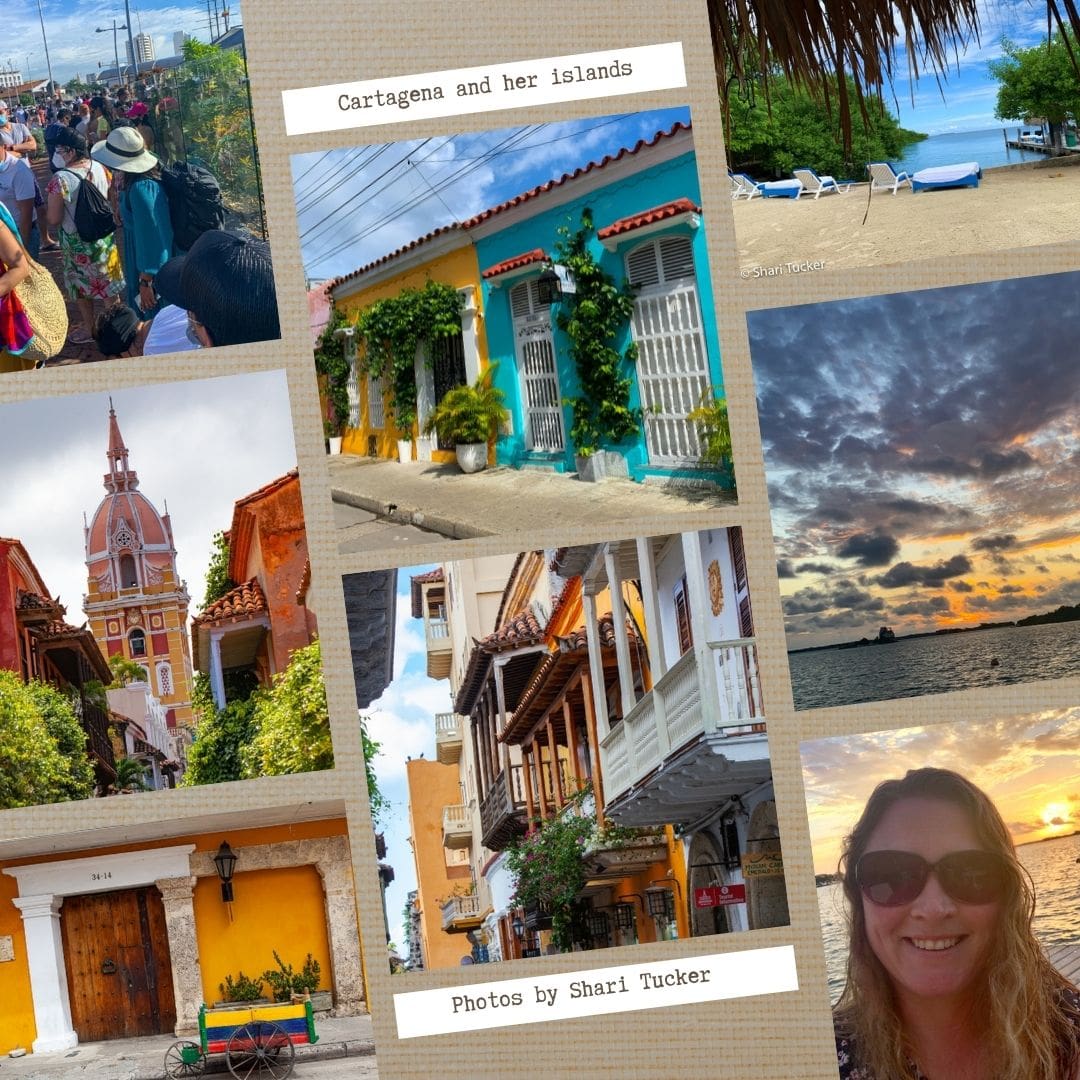
I ended my trip with a few days in Cartagena and her islands, albeit poorly timed. I arrived on the Saturday of a long weekend and the local tourists had already descended on the historic city. While all restaurant and tourism staff were following masking rules, in the heat of the day it was clear that most international and domestic tourists were not. It was like day and night going from nature destinations to a bustling tourist city in pandemic times.
The next day, the port to the Rosario islands was packed. Staff tried to manage social distancing by seating passengers for each boat in a separate area on land while they waited to embark, but honestly, distancing was non-existent. Everyone had a mask, but not everyone was using them properly. A mix of the sweltering heat, a vacation mindset and a lack of respect for the rules all played into this vast difference from the coffee region to the tourist haven of Cartagena.
Once I settled into my quirky island resort, I moved about without a mask, however staff were always masked. All common or public areas were open-air from reception to dining. The only enclosed space was your room. I enjoyed several days of fresh air, relaxation, and ocean swims before taking the boat back to Cartagena for my PCR testing and return trip to Canada.
Throughout Colombia, it was clear that the tourism sector is leading the way, following the rules, encouraging masking and social distancing. There were foot-pump sanitizing stations everywhere. Staff at hotels, restaurants and bars were never un-masked and plexiglass had been installed at most reception areas. Cleaning protocols were stringent and I only ever felt the tiniest bit concerned about COVID-19 in the presence of tourists who were choosing not to follow the local rules.
The Colombia of drug wars, shootouts and FARQ Guerillas trolling the countryside are in the past. Peace agreements have been in place for years and Colombia is forging forward. Sure, there are cities you should avoid and areas within cities that aren’t safe for tourists, but that’s the same for any country.
Don’t let Colombia’s recent history hold you back. It is time to give Colombia a chance. You won’t be disappointed.
Shari Tucker is the Travel Planner behind Halifax-based Love the Way You Travel.

















